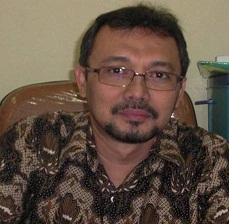Fish Oil Production Process From Waste Catfish (Pangasius Pangasius) in Balai Besar Pengujian Penerapan Hasil Perikanan (BBP2HP) East Jakarta
Downloads
Processing by product of catfish (Pangasius pangasius) on domestic scale or industrial produces many problems related to polluting the environment. Fish processing industry activities always generate waste because it is used generally only part of the meat, head, offal (entrails), spines and skin removed. Catfish have oil content is high enough, so the catfish waste has the potential to be extracted fish oil are rich in benefits. Fish oils generally contain unsaturated fatty acids are eicosapentaenoicacid (EPA) and docosahecsaenoatacid (DHA). Unsaturated fatty acids are known to prevent many diseases such as atherosclerosis, coronary heart disease, lower blood cholesterol levels, cancer, platelet mellitus, diseases of the bone joints, asthma, and prevent the aging process. The purpose of Field Work Practice are learned the process of oil production fish waste from catfish (Pangasius pangasius). The Practice of Field Work has been carried out at the Balai Besar Pengujian Penerapan Hasil Perikanan (BBP2HP). The results obtained through observation, interviews and active participation in the manufacture of fish oil in BBP2HP includes the preparation of materials and tools, washing, weighing, heating, pressing, phase separation, making crude oil, and packaging. Raw materials used in the manufacture of oil is a waste of catfish (Pangasius pangasius). From 1 kg of waste catfish (offal, belly flap, head, fins, tail) obtained 116 ml crude fish oil. Section waste catfish has gone through the process of steaming and pressing which causes the water content there in is reduced. After that, the catfish oil packed in bottles.
Hastarini, Ema., Fardian, Dedi., Irianto, Eko. Hari., Budhijanto, Slamet., 2012. Karakteristik Minyak Ikan Dari Limbah Pengolahan Filet Ikan Patin Siam (Pangasius hypopthalamus) Dan Patin Jambal (Pangasius djambal). Jurnal Teknologi Pertanian. Universitas Gadjah Mada.
Kementrian Kelautan dan Perikanan. 2012. Statistik impor hasil perikanan, Buku 2, Kementrian Kelautan dan Perikanan. Jakarta. 21hlm.
Ketaren, S. 1986. Teknologi Minyak dan Lemak. UI Press. Jakarta.
Laporan Tahunan Balai Besar Pengujian Penerapan Hasil Perikanan (BBP2HP) Tahun 2014
Marriot, G. Norman., and Gravani, B. Robert., 2006. Principles Of Food Sanitation. Fifth Edition : Food Science Text Series.
Maryati, H.S., 2000. Tata Laksana Makanan, Rineka Cipta, Jakarta.
Murniyati, A.S dan Sunarman. 2000. Pendinginan Pembekuan dan Pengawetan Ikan. Kanisius. Yogyakarta.
Panagan, A. T., Yohandini, H., dan Gultom, J. U. 2011. Analisa Kualitatif dan Kuantitatif Asam Lemak Tak jenuh Omega-3 dari Minyak Ikan Patin (Pangasius pangasius) dengan Metoda Kromatografi Gas. Jurnal PenelitianSains, Vol. 14 (4): 38-40.
Copyright (c) 2020 Journal of Marine and Coastal Science

This work is licensed under a Creative Commons Attribution-NonCommercial-ShareAlike 4.0 International License.













